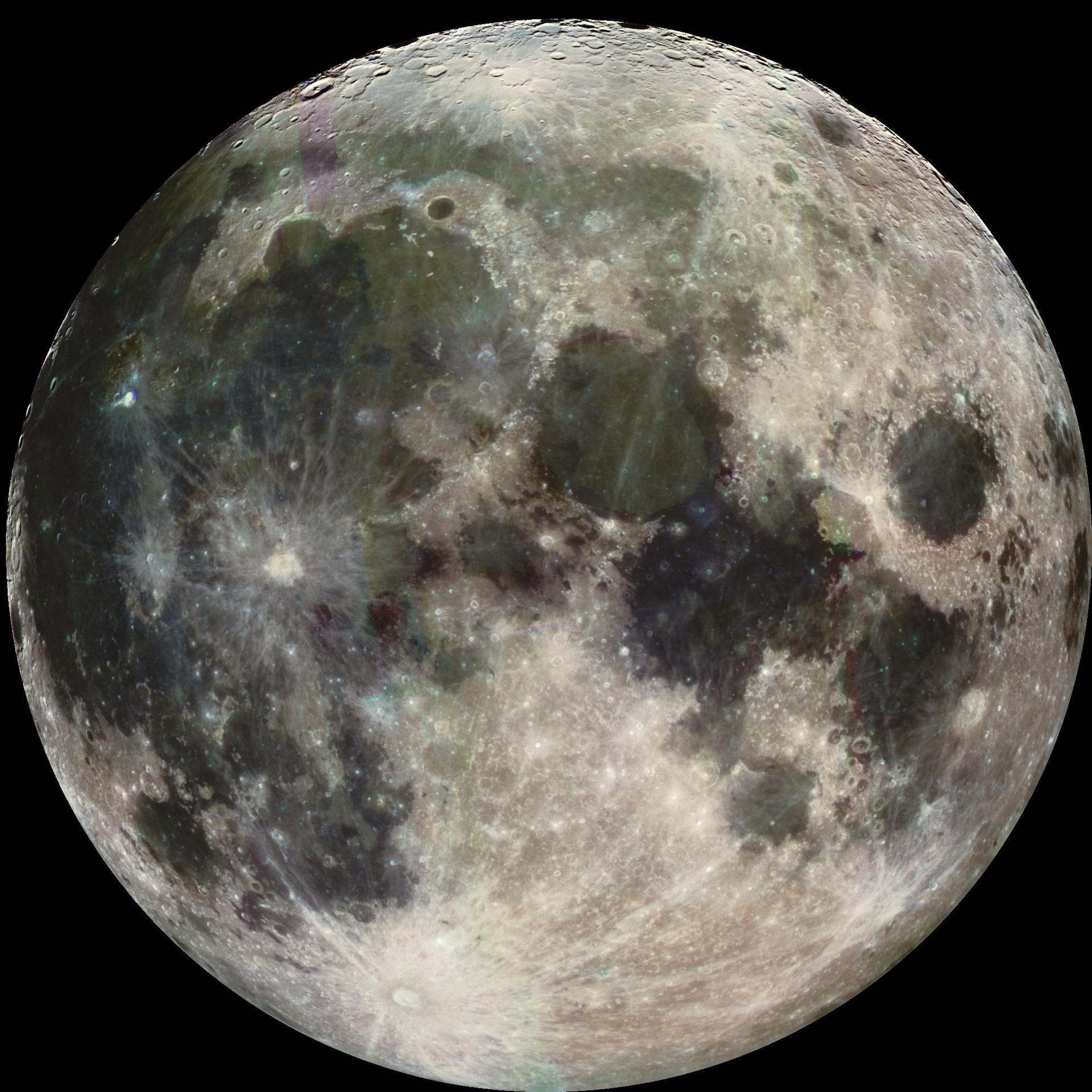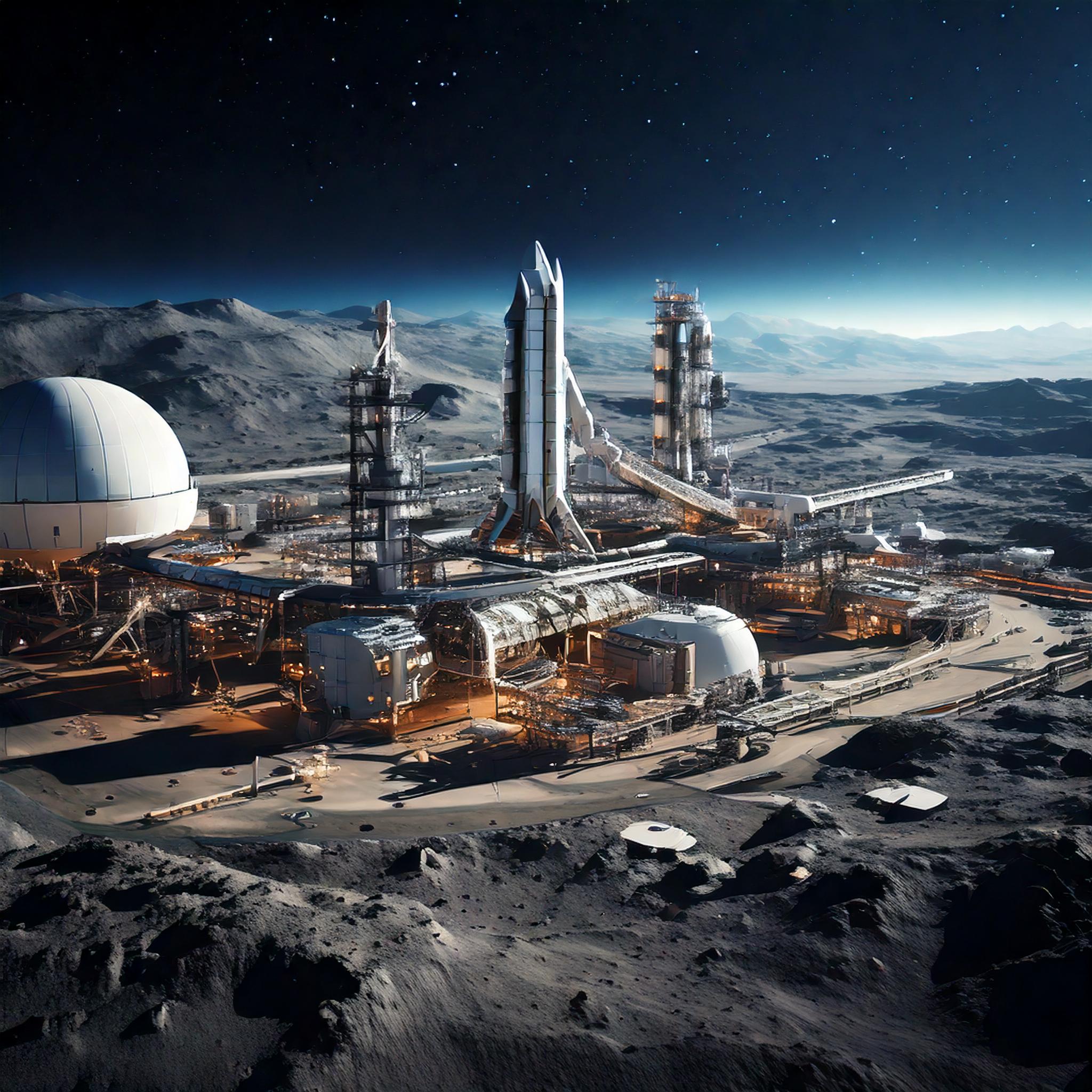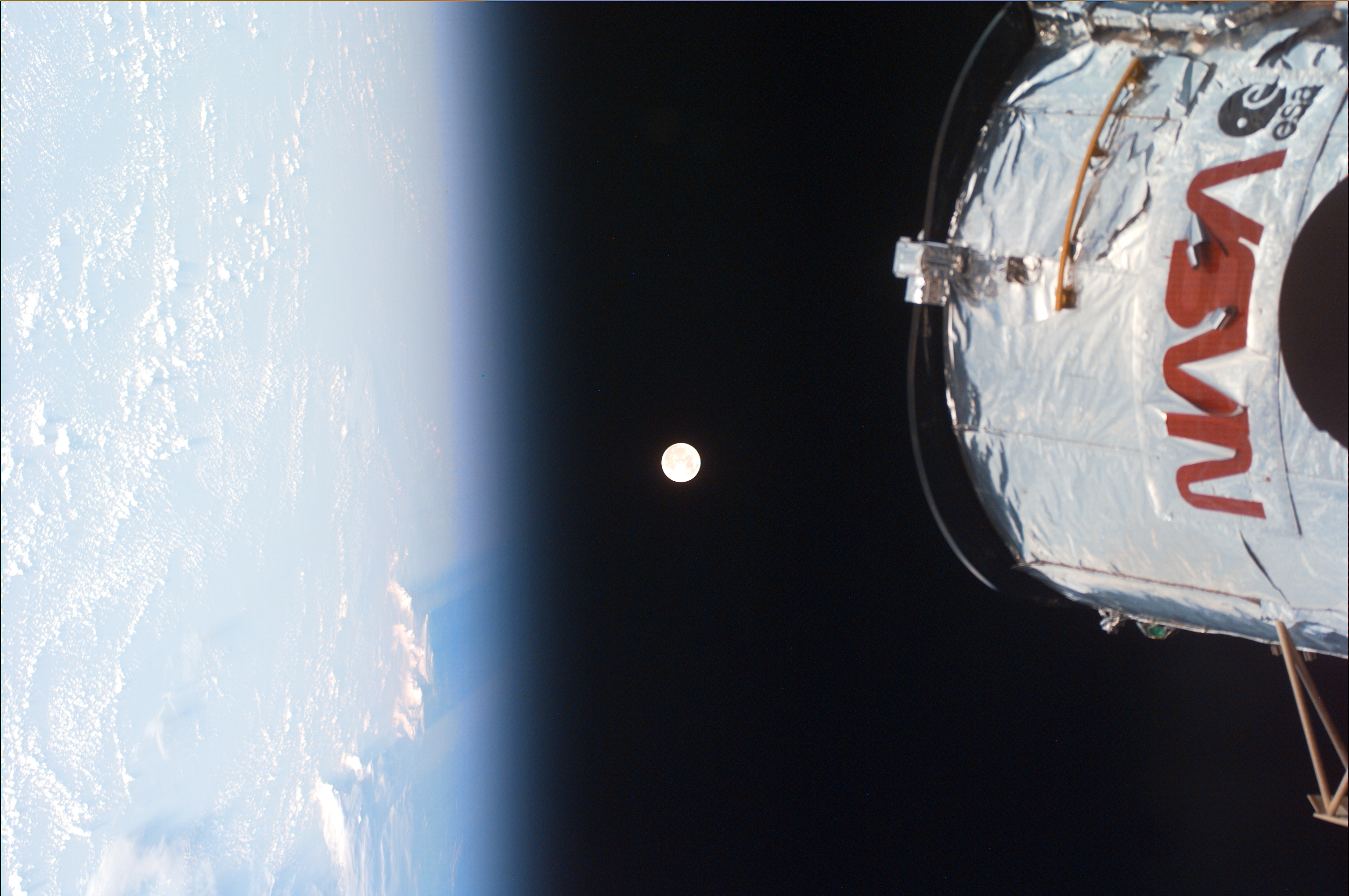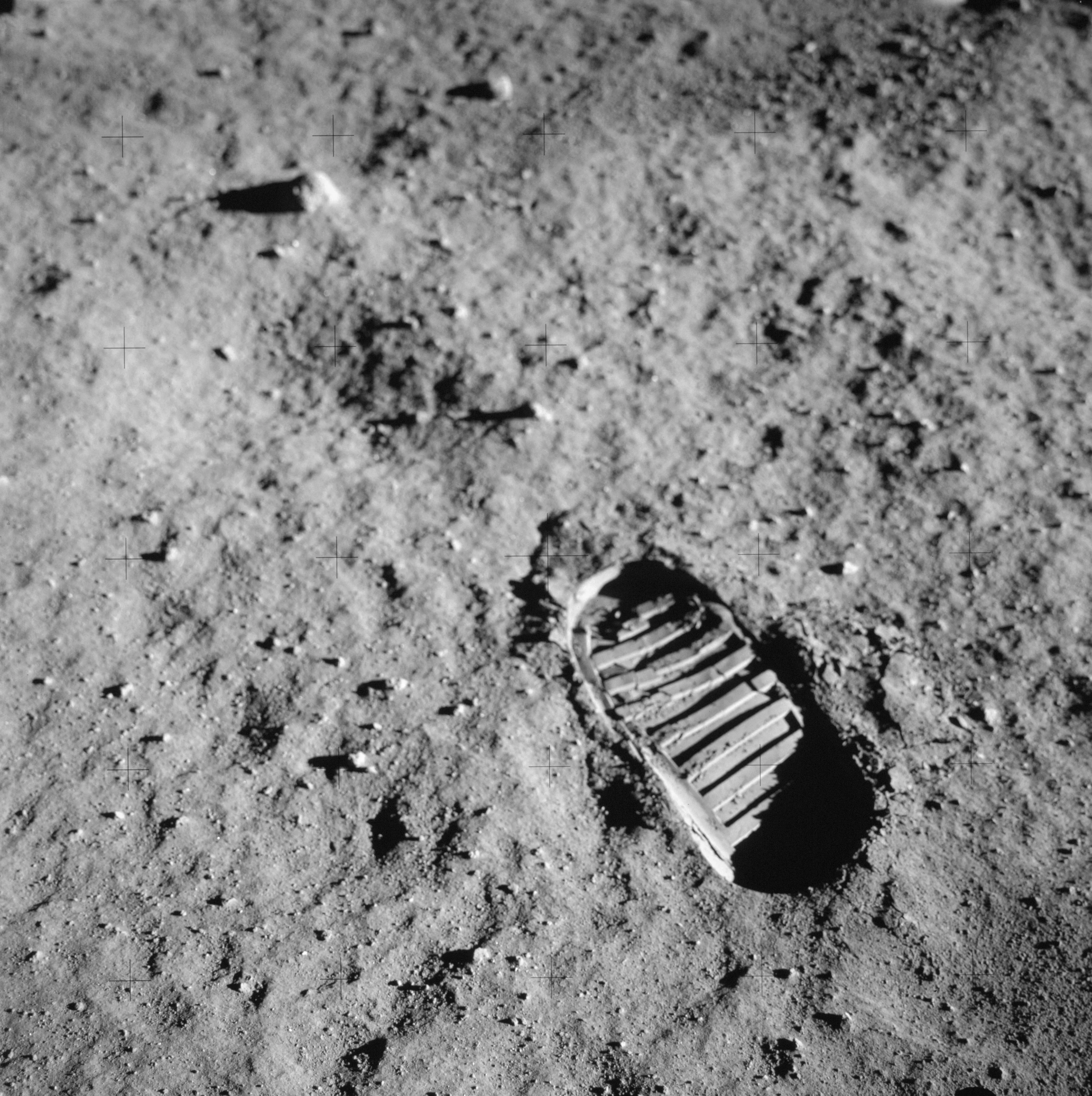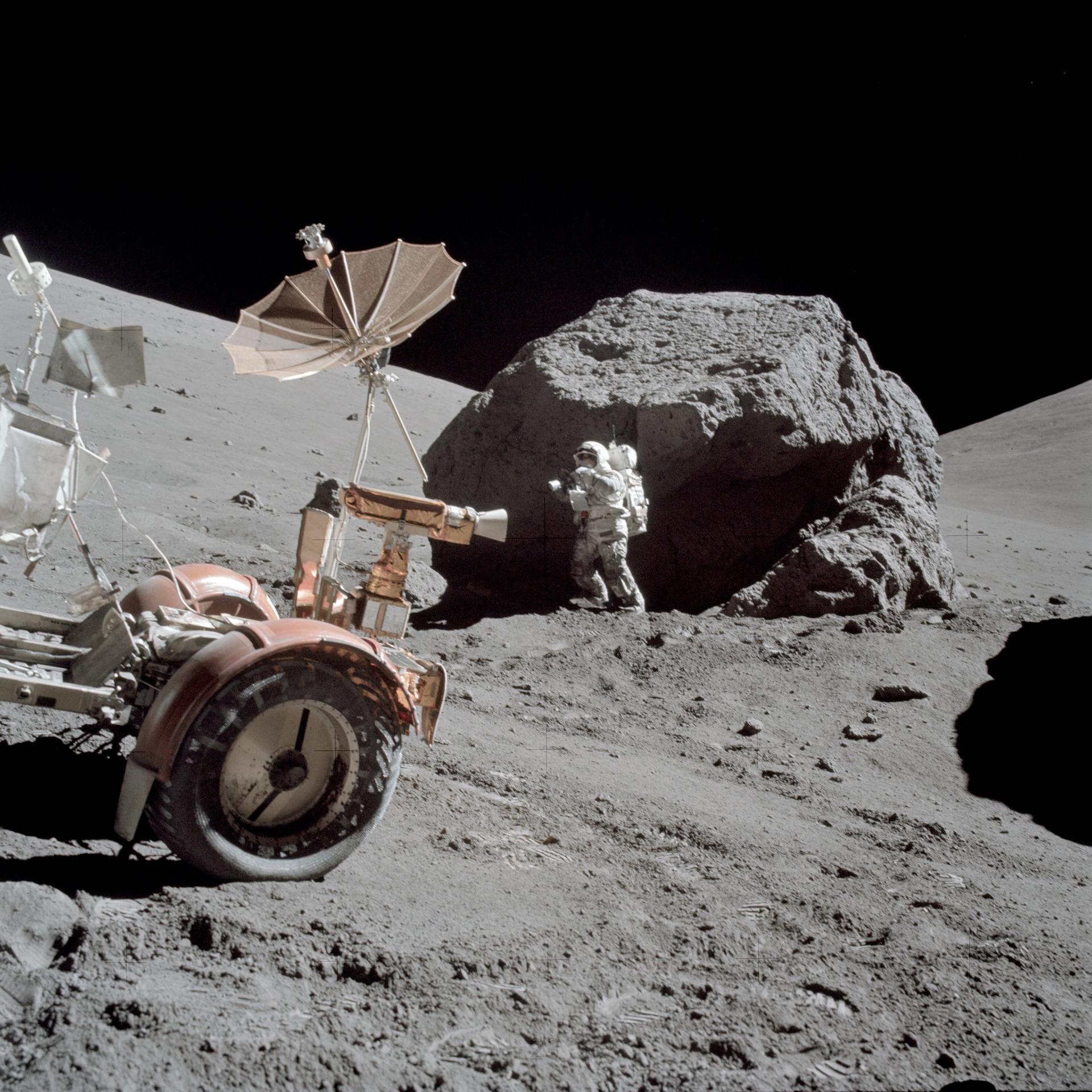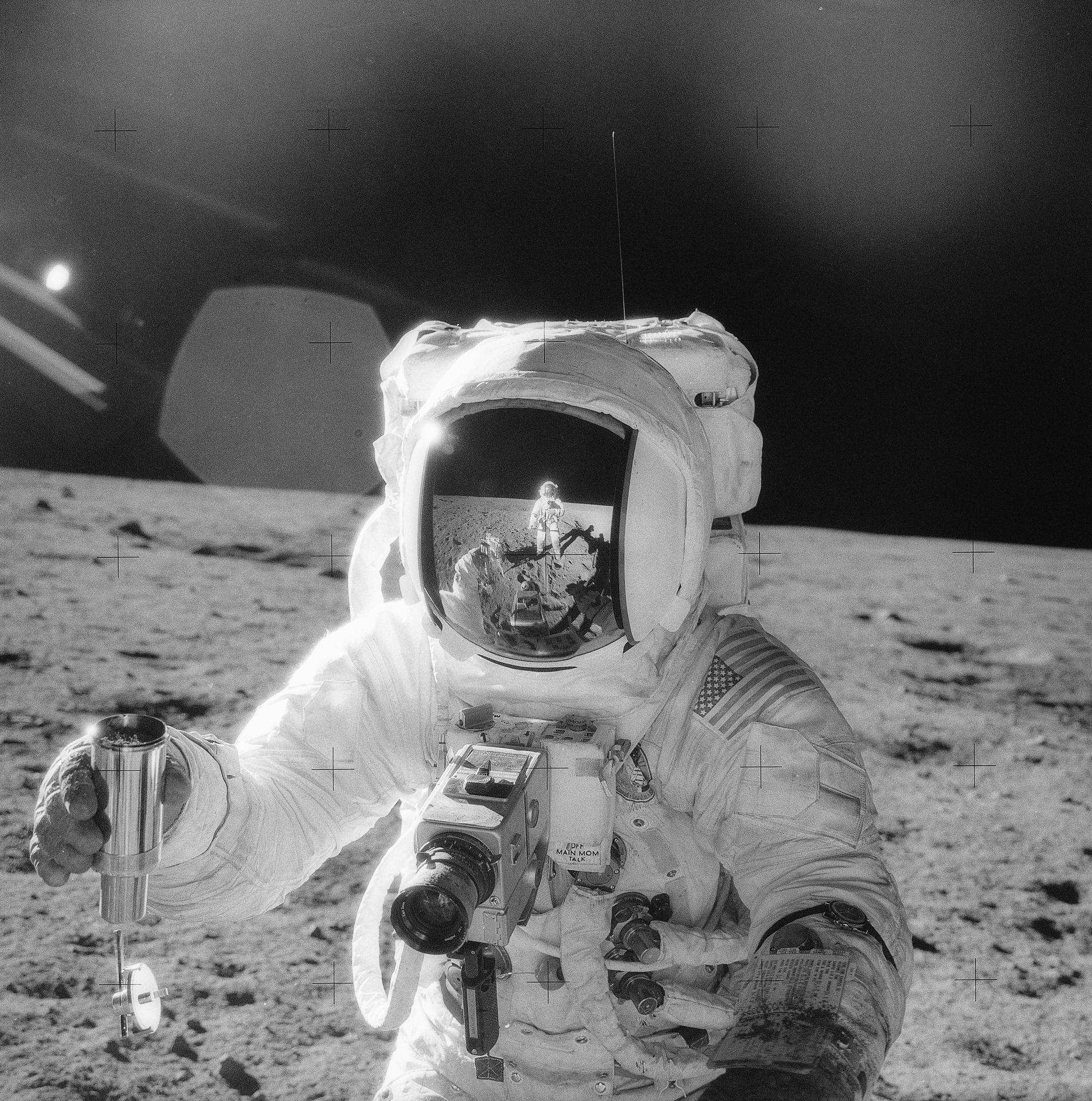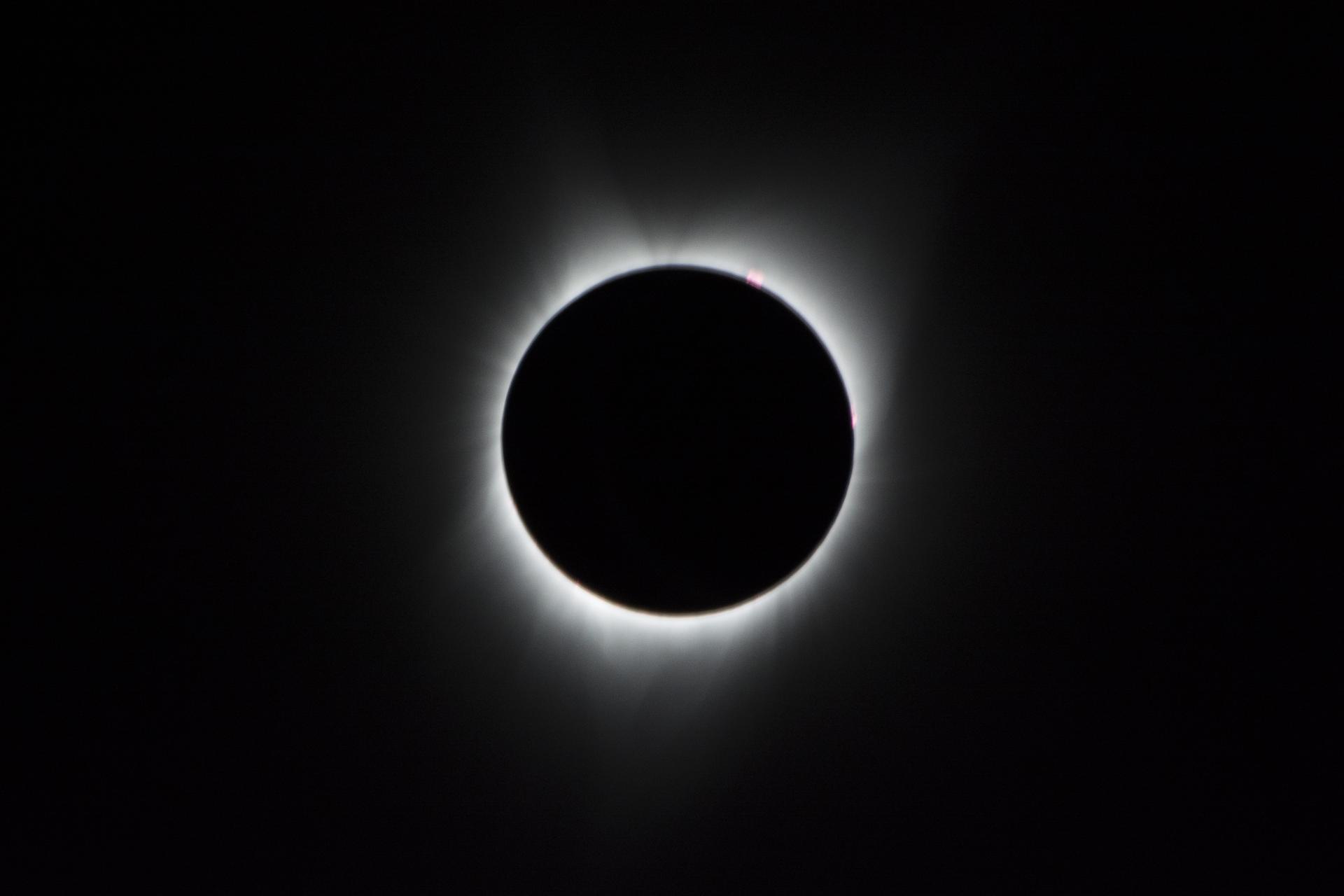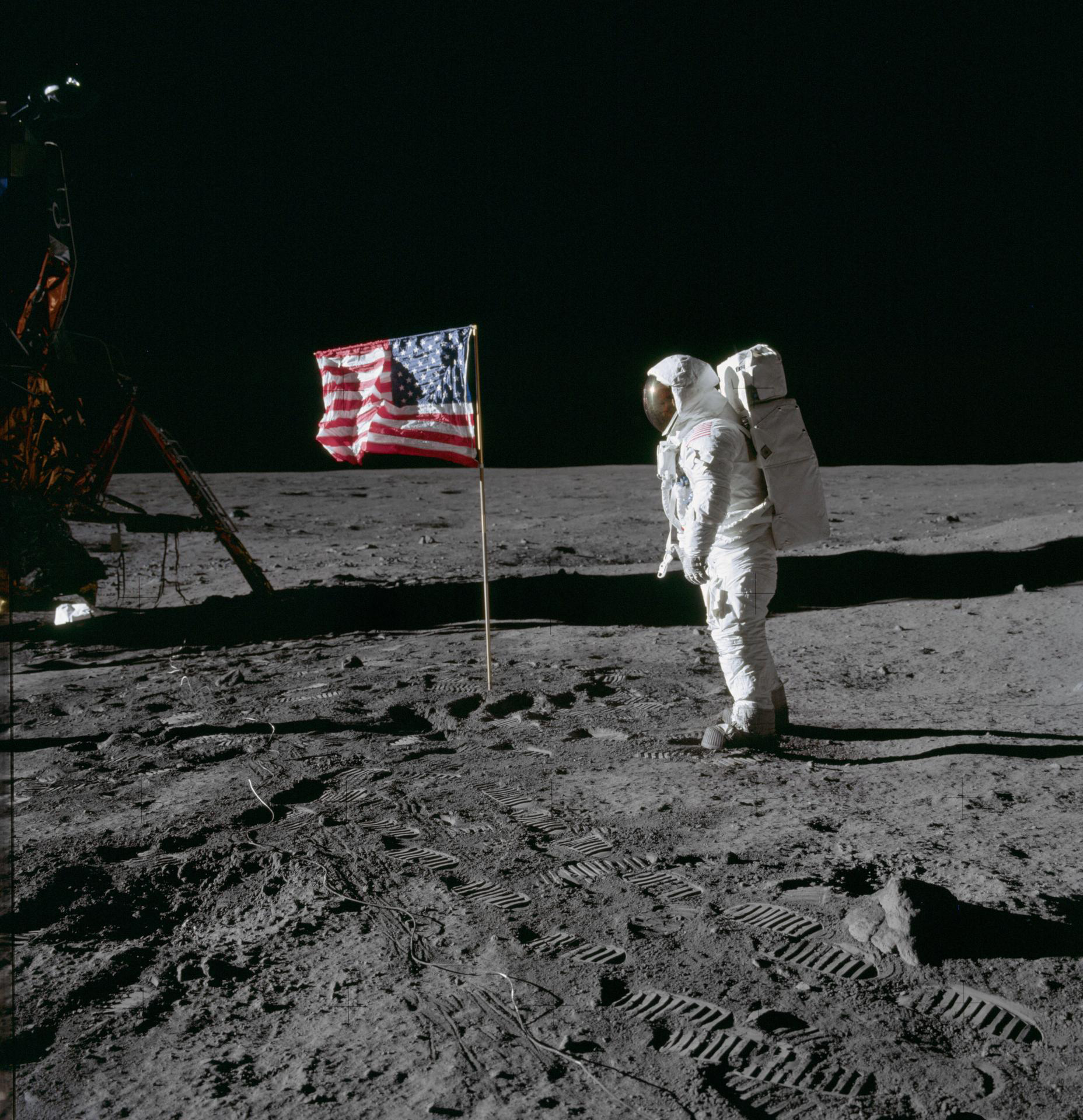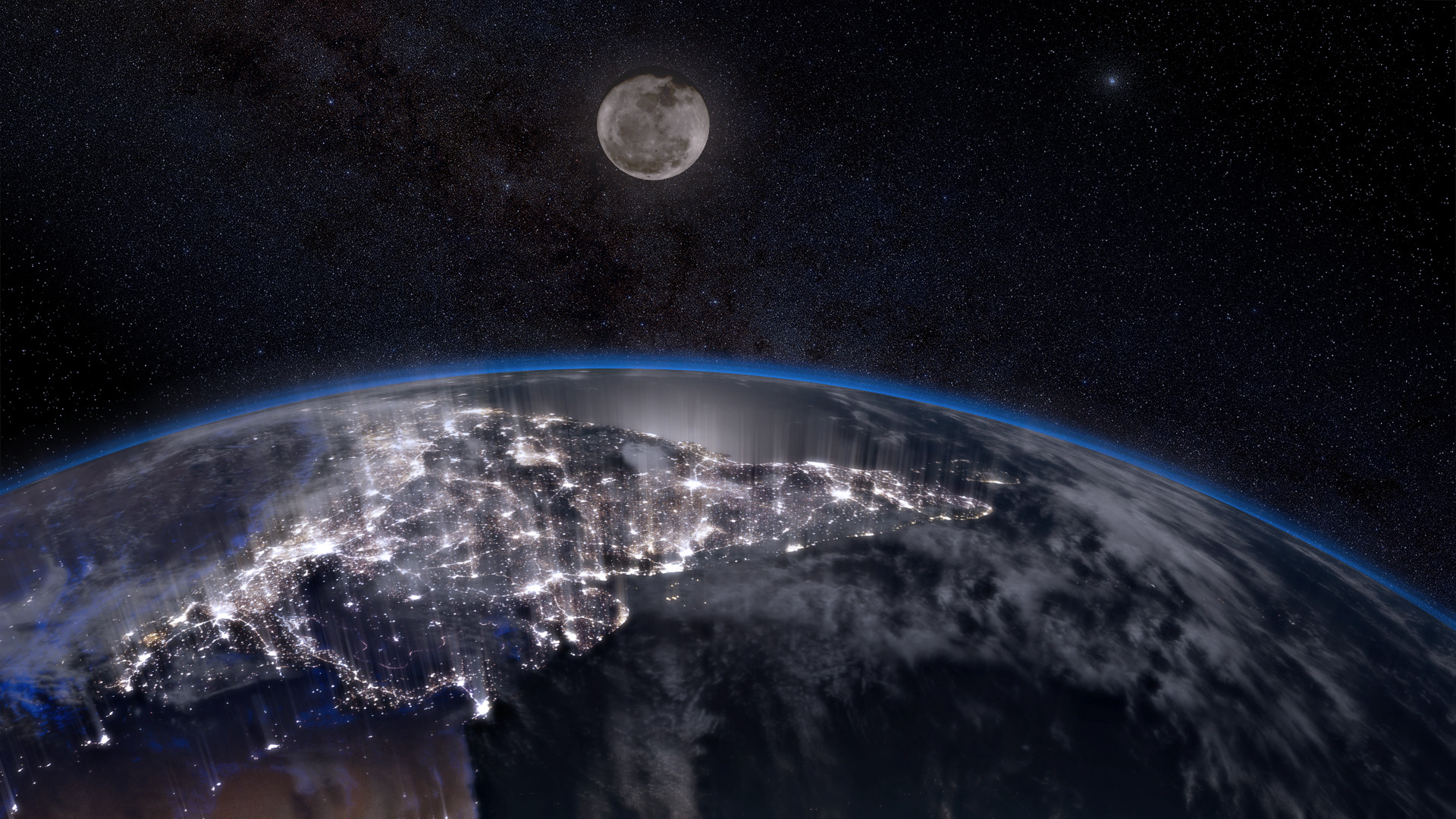Lunar "The Moon"
Overview
| Location: | 384,400 km (238,855 miles) away from Earth |
|---|---|
| Size: | 1/4th the size of Earth in diameter (3,474 km) |
| Surface Temperature: | 127°C (260°F) in the daytime to -173°C (-280°F) at night |
| Athmospheric Composition: | n/a |
| Athmospheric Pressure: | n/a |
| Orbital Duration: | 27.3 days to complete one orbit around Earth |
| Named After: | Luna/Lunar (Roman Goddess) |
| Remarks: | The most widely accepted theory is that the Moon formed about 4.5 billion years ago, likely from debris left over after a Mars-sized body collided with Earth. The Moon is tidally locked to Earth, meaning it keeps the same face toward us as it orbits, a result of gravitational interactions over time. |
Overview
The Moon, Earth's only natural satellite, has fascinated humanity for millennia. It is a constant presence in the night sky, influencing life on Earth in various profound ways. Despite its distance of approximately 384,400 kilometers (238,855 miles) from Earth, the Moon plays a significant role in shaping our planet’s environment and holds mysteries that scientists continue to explore.
The Moon is about 1/4th the size of Earth, with a diameter of approximately 3,474 kilometers. It has no atmosphere, which means there is no air or weather, and its surface experiences extreme temperature variations. During the day, the Moon’s surface can reach temperatures as high as 127°C (260°F), while at night, it plunges to -173°C (-280°F). This stark contrast is due to the lack of an atmosphere to trap heat.
The Moon’s surface is covered with craters, mountains, and vast plains of dark basaltic lava known as "maria," formed by ancient volcanic activity. These features provide evidence of billions of years of bombardment from meteoroids, which have shaped its landscape. Unlike Earth, the Moon has not undergone significant geological processes like plate tectonics or erosion, meaning that its surface remains largely unchanged over long periods, offering a glimpse into the early solar system.
The Moon has a synchronous rotation, meaning it rotates on its axis once for every orbit it completes around Earth. This results in the same side of the Moon always facing our planet, a phenomenon known as "tidal locking." The far side of the Moon, often incorrectly called the "dark side," remains out of view from Earth, though it receives sunlight just as much as the near side.
The Moon is the only celestial object aside from earth, that a human being ever visited.
Imagining a Colony on Lunar
One of the primary reasons to colonize the Moon is its potential as a hub for scientific research. The Moon’s surface is a time capsule, untouched by erosion and weathering processes, providing valuable insights into the early solar system. Its lack of atmosphere allows for unobstructed views of space, making it an ideal location for astronomical observations. A colony on the Moon could serve as a base for telescopes and other research instruments that could significantly expand our understanding of the universe.
Beyond its scientific value, the Moon also offers practical advantages for space exploration. It is much closer to Earth than other celestial bodies, making it a more accessible and cost-effective destination for human missions. A lunar colony could serve as a testing ground for the technologies and life-support systems required for long-term space travel. By learning how to live and work on the Moon, we could develop the skills needed to establish colonies on other planets, such as Mars.
Environmental Challenges
Building Luna City has it's own set of challenges that might not be as severe as the other prospects, but it would still be the biggest undertaking for humanity as of now:
- Radiation Exposure: Without an atmosphere or magnetic field, the Moon offers no protection from harmful cosmic and solar radiation, which poses a serious risk to human health.
- Lack of Atmosphere: The Moon's absence of breathable air means that colonists would need to bring or produce all the oxygen and atmospheric pressure needed for survival.
- Radiation Exposure: Without an atmosphere or magnetic field, the Moon offers no protection from harmful cosmic and solar radiation, which poses a serious risk to human health
- Life Support Systems: Ensuring reliable systems for air, water, food, and waste disposal is essential for a lunar colony, and sustaining these systems over long periods is a major technological challenge.
- Sustainability: Ensuring a self-sustaining colony that doesn’t rely heavily on Earth for supplies will require advancements in renewable energy, resource extraction, and recycling technologies.
Possible Colony Design
Living on the Moon would be a radically different experience compared to life on Earth. Given the harsh lunar environment, life on the Moon would require advanced technology and adaptations. Here’s a glimpse of what living on the Moon might look like:
- Protective Structures: Lunar habitats would likely be housed in pressurized, airtight modules to protect inhabitants from the vacuum and radiation. These structures might be built using inflatable materials or reinforced with lunar regolith (moon soil) for radiation shielding.
- Low Gravity: The Moon’s gravity is only 1/6th of Earth’s, so movement would feel different. People would float or hop around, requiring adjustments to daily activities like eating, drinking, or working. Special equipment would help with maintaining balance.
- Space Suits: When stepping outside the habitat, colonists would wear specialized space suits to protect against the vacuum, radiation, and extreme temperatures. These suits would be designed for mobility and would also help regulate body temperature and provide oxygen.
- Surface Vehicles: Colonists would use rovers and other vehicles to travel across the lunar surface. These vehicles would need to be specially designed to handle the Moon's low gravity and lack of atmosphere.
- Entertainment and Social Interaction: To mitigate the isolation and confined living space, social activities, virtual reality entertainment, and personal connections with family and friends back on Earth would be important to maintain mental health.
Functionality and Purpose
the purpose of a lunar colony is far-reaching. It serves as a platform for scientific discovery, a critical step for expanding humanity’s presence beyond Earth, a source of valuable resources, and an opportunity to advance technology. Ultimately, it could play a pivotal role in ensuring humanity’s future by serving as a backup for life on Earth and a springboard for exploring and colonizing other planets in our solar system.
Commercial and Industrial Exploitation
A Moon base could become a hub for various commercial ventures. Here are the main prospects for commercial use of a lunar colony:
- Helium-3 Mining for Fusion Energy: One of the most promising commercial prospects is mining helium-3, a rare isotope found on the Moon’s surface. Helium-3 has the potential to be a highly efficient fuel for nuclear fusion, which could provide a nearly limitless and clean energy source. If fusion technology matures, lunar helium-3 could become an important resource for energy production on Earth.
- Mining Rare Earth Elements: The Moon contains a variety of valuable minerals and rare Earth elements, such as platinum.
- Moon Tourism: With the increasing interest in space tourism, a lunar colony could serve as a destination for wealthy tourists seeking to experience space travel. Companies like SpaceX and Blue Origin are already working on technology to make space travel more accessible.
- Space Farming: Producing unique food products in space, such as new types of space-grown crops, could become a commercial venture that appeals to niche markets back on Earth.
- Commercial Infrastructure: Private companies could build the necessary infrastructure for a lunar colony, including habitats, mining operations, transport systems, and energy production.
